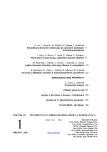-
Medical journals
- Career
Perilunar dislocation of the wrist, adequate method of treatment
Authors: Jaroslav Pilný; Aleš Švarc; Petr Hoza; Pavel Petera; Petr Kubena
Authors‘ workplace: University of Pardubice, Faculty Medical Studies ; Univerzita Pardubice, Fakulta zdravotnických studií ; Department of Orthopaedics Surgery, Regional Hospital Pardubice ; Ortopedické oddělení, Pardubická krajská nemocnice, a. s.
Published in: Úraz chir. 18., 2010, č.1
Overview
The aim of this work was to evaluate the results of treatment of perilunar dislocation of the wrist.
Patient file:
Authors present their results of treating a file of 7 patients with perilunar dislocation of the wrist and 2 patients with transscap-hoperilunar carpal dislocation during the 2006-2008 period. All patients were male with average age of 31.4 years old (19-46). For 6 of 9 patients the dominant hand was affected.Methodology:
Primary reposition was carried out in all cases and subsequently the reconstruction of interosseous ligaments using the dorsal approach and volar capsuar ligaments using the volar approach were carried out. Results were evaluated after 26 months in average.Results:
When evaluating the results we learned that the range of movement reached 72.6 % compared to the other side and the grip force about 73.1% compared to the other hand. 4 patients felt no pain, 2 felt pain during great load, 2 during workaday load and 1 indicated resting state pain. Treatment of this patient was complicated with algoneurodystrophy syndrome. 6 patients were able to return to day-to-day load.Conclusion:
Adequate treatment of perilunar dislocation of the wrist leads to good results, when correctly and timely diagnosed. Such serious cases should be treated at specialized centers.Key words:
perilunar dislocation, transscapho-perilunar carpal dislocation.
Sources
1. ADKINSON, J.W., CHAPMAN, M.W. Treatment of acute lunate and perilunate dislocations. Clin Orthop. 1982, 164, 199–207.
2. BERGER, R.A. The ligaments of the wrist. A current overview of anatomy with considerations of their potential functions. Hand Clin. 1997, 13, 63–82.
3. BÖHLER, L. The Treatment of Fractures. 5th English ed. New York: Grune & Stratton, 1956. 826–854.
4. CAMPBELL, R.D., LANCE, E.M., YEOH, C.B. Lu-nate and perilunar dislocations. J Bone Joint Surg. 1964, 46, 55–72.
5. CONWELL, H.E. Closed reduction of acute dislo-cations of the semilunar carpal bone. Ann Surg. 1925, 82, 289–292.
6. COONEY, W.P., BUSSEY, R., DOBYNS, J.H. et al. Difficult wrist fractures: Perilunate fracture-dislo-cations of the wrist. Clin Orthop. 1987, 214, 136–147.
7. DAVIS, G.G. Treatment of dislocated semilunar car-pal bones. Surg Gynecol Obstet. 1923, 37, 225–229.
8. DOBYNS, J.H., SWANSON, G.E. A 19-year-old with multiple fractures. Minn Med. 1973, 56, 143–149.
9. FERNANDEZ, D.L. Technique and results of exter-nal fixation of complex carpal injuries. Hand Clin. 1993, 9, 625–637.
10. DOSPĚL, I., DRÁČ, P., ČIŽMÁŘ, I. Diagnostika a léčba perilunátních luxací. Prakt Lék. 2007, 87, 739–740.
11. GILULA, L.A., WEEKS, P.M. Post-traumatic liga-mentous instabilities of the wrist. Radiology. 1978, 129, 641–651.
12. HERZBERG, G., COMTET, J.J., LINSCHEID, R,L. Perilunate dislocations and fracture-dislocations: A multicenter study. J Hand Surg. 1993, 18, 768–779.
13. HERZBERG, G., FORISSI,E.R. Acute dorsal trans-scaphoid perilunate fracture-dislocations: Medium-term results. J Hand Surg. 2002, 27 Br, 498–502.
14. MAYFIELD, J.K. Mechanism of carpal injuries. Clin Orthop. 1980, 149, 45–54.
15. MAYFIELD, J.K., JOHNSON, R.P., KILCOYNE, R.K. Carpal dislocations: Pathomechanics and pro-gressive perilunar instability. J Hand Surg. 1980, 5, 226–241.
16. MELONE, C. P. JR., MURPHY, M.S., RASKIN, K.B. Perilunate injuries. Repair by dual dorsal and volar approaches. Hand Clin. 2000, 16, 439–448.
17. RUSSELL, T,B, Intercarpal dislocations and frac-ture-dislocations: A review of fifty-nine cases. J Bone Joint Surg. 1949, 31, 524–531.
18. TAVERNIER, L. Les déplacements traumatiques du semilunaire. Thése Lyon. 1906, 138–139.
19. TRUMBLE, T., VERHEYDEN, J. Treatment of isolated perilunate and lunate dislocations with combined dorsal and volar approach and interosseus cerclage wire. J Hand Surg. 2004, 29, 412–417.
20. WATSON-JONES, R. Carpal semilunar dislocations and other wrist dislocations with associated nerve lesions. Proc R Soc Med. 1929, 22,1071–1086.
21. WHIPPLE, T.L. The role of arthroscopy in the treat-ment of scapholunate instability. Hand Clin. 1995, 11, 37–40.
Labels
Surgery Traumatology Trauma surgery
Article was published inTrauma Surgery

2010 Issue 1
Most read in this issue- TREATMENT OF RADIAL HEAD FRACTURES OF MASON II TYPE IN ADULTS
- Complications of Plate and Screw Fixation in Metacarpal Fractures
- Perilunar dislocation of the wrist, adequate method of treatment
- Likvorea in pediatric patients with craniocerebral injury
Login#ADS_BOTTOM_SCRIPTS#Forgotten passwordEnter the email address that you registered with. We will send you instructions on how to set a new password.
- Career

